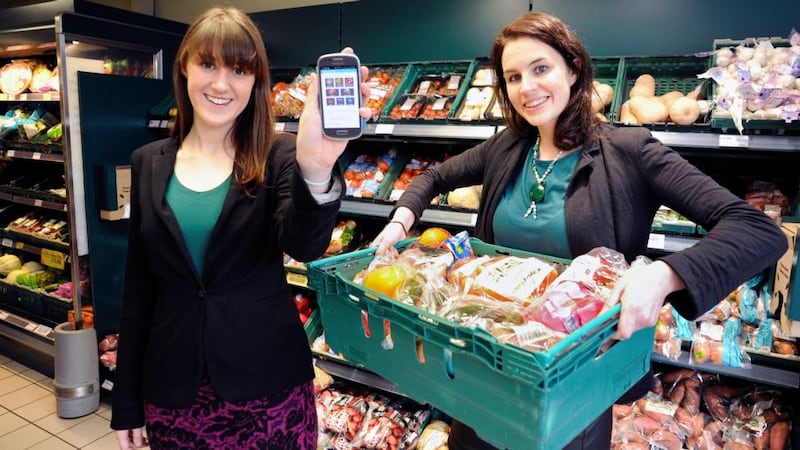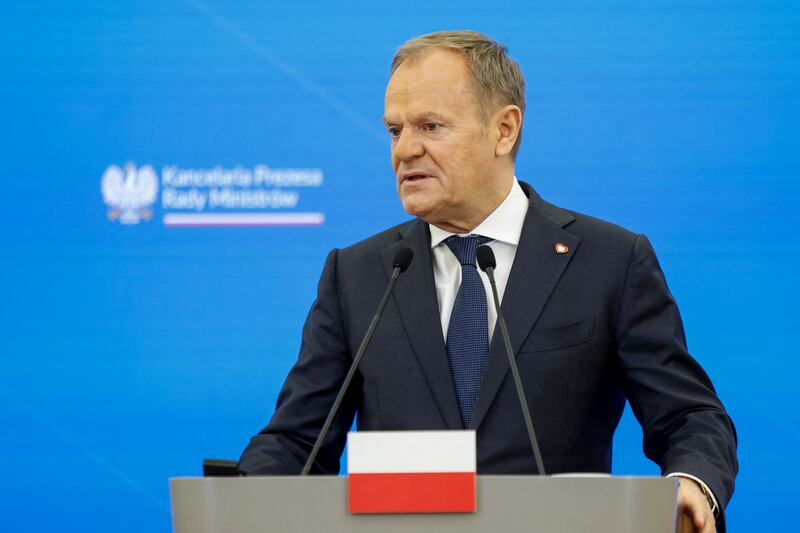Building sustainable food systems while tackling food waste will be given prominence for the first time at the international climate conference, Cop28, in Dubai this month. So, it’s no coincidence that the board of the Global Foodbanking Network (GFN) met in Dublin in late October to witness firsthand the work of the Irish food redistribution social enterprise, FoodCloud.
While the team from GFN enjoyed lunch made from surplus food at FoodCloud’s redistribution hub in Tallaght, Dublin, they also visited a Tesco supermarket to see how surplus food is prepared for collection by local charities.
What interested GFN chief executive Lisa Moon most, though, was how FoodCloud technology platform, Foodiverse connects supermarkets and restaurants directly to local community and voluntary groups. The Foodiverse app is used in Ireland, the UK, the Czech Republic and Slovakia, with one million meals redistributed through the platform every week.
“We are particularly interested in the FoodCloud technology which would allow food banks to delegate distribution or do ‘virtual food banking’,” says Moon. Currently, only about 5 per cent of redistributed food around the world uses virtual models whereas in Ireland, 30 per cent of all food is redistributed through the FoodCloud app.

The GFN works mainly in Asia, Mexico, South America and sub-Saharan Africa. Giving away surplus food to charities that are closer to where the food is produced could save on both warehouse and transportation costs. In some countries such as Thailand and South Africa, virtual food banking models are already working well.
“With more climate issues and increases in population, it doesn’t make economic sense to hold on to large quantities of food. There is no reason why food can’t be redistributed from shared spaces,” says Moon. While Europe has seen a decline in donations to food banks in the last few years, there was a 33 per cent increase in food banks in the global south in 2022.
Fifty per cent of all the food redistributed around the world is fruit and vegetables and policy analysts at the GFN work with governments to encourage the redistribution of surplus food while also dis-incentivising food waste in the first place.
“For example, we need to make sure it’s not cheaper to landfill food than to donate it. We need to ensure that the food loss and waste hierarchy is followed so food is first discounted for customers or donated, then used for animal feed and then used to create energy,” Moon explains. Efforts are also concentrated on standardised food labels to avoid confusion between use before and best-before date labels.
For those who might fear that setting up strong redistribution systems to reduce food waste, will in the long term, prevent food waste reduction at source, a quick look at the statistics around food waste will alleviate these concerns.
[ Food waste: Not only are we adding to the climate crisis, we are wasting moneyOpens in new window ]
More than a quarter of the food that is produced globally is wasted and, according to Moon, less than 1 per cent of all food waste is redistributed.
It is also widely held that if a quarter of all the wasted food was redistributed to the people who need it, this surplus food could feed the 800 million undernourished people around the world. The number of people suffering from malnutrition or hunger has risen in the last few years due to failure of staple food crops and large displacement of people from war-torn regions.
“There is enough food in the world. It is just in the wrong place,” Moon adds.
Food waste is also a large contributor to climate change. It is currently estimated that our food systems – from production to consumption – contribute to about a third of all greenhouse gas emissions with food waste itself contributing to between 8 and 10 per cent of GHG emissions globally.
The GFN will help support FoodCloud expand the use of the Foodiverse app in the near future to Kenya in a project that is funded by Irish Aid.
Food Cloud employee James Clifford has recently returned from Kenya where he was developing connections with food banks there and explaining the potential of the Foodiverse platform.
“The idea is that the technology represents the food bank operation in the market once you establish a network of donors and charities that collaborate with each other,” explains Clifford. The traditional food bank model is a labour-intensive exercise in which surplus food is stored in food hubs for redistribution. The virtual food banking model promotes local connections so that smaller amounts of food is redistributed in local communities.
“It’s also about building relationships on a local level. The human element is so important,” says Clifford.
On his trip to Kenya, he met people working in pack houses sorting fruit and vegetables for food banks in Nairobi. He also visited Naivasha, an agricultural area northwest of Nairobi where the Nairobi food bank trucks visit once a week, and Mombasa, a coastal area in the southeast of Kenya where there is currently no connection with food banks.
“Agricultural recovery is very new for us yet it is one of the biggest areas where food is wasted,” says Clifford. In Ireland, FoodCloud has recently begun working directly with growers to reduce food waste at source in a project supported by the Department of Agriculture, Food and the Marine.
The Foodiverse app is a three-step process where the donor indicates what food they have. Then the charity gets a notification through which they can accept the food. The third step is the transfer of food – either collected or delivered – where both parties have to leave their e-signature.
“One of the challenges in Kenya is that retailers are concerned about food safety because there is no legislation there on food donations,” explains Clifford. FoodCloud hopes that by collaborating with the GFN and Food Banking Kenya, trust can be built to encourage more donations of surplus food.
[ MyGug digester turns food waste into renewable energy and fertiliserOpens in new window ]
Speaking at the gathering of GFN and FoodCloud personnel at the international law firm DLA Piper in Dublin, agricultural economist and former CEO of Concern Worldwide, Tom Arnold, said there were huge opportunities to tackle food waste in Africa, particularly in Kenya.
“Food loss and food waste is becoming a bigger and more important issue which needs to be inserted into food system transformation and climate change dialogue,” Arnold said. He hoped Ireland would play a substantial role in advocacy at Cop28, drawing on inspirational examples in this country.
The Irish Government has set ambitious targets to reduce food waste by 50 per cent by 2030 in line with the UN Sustainable Development Goals. The EU will also set targets to reduce food waste by the end of 2023.
Food waste in figures
About a quarter of all food produced around the world is wasted. And if a quarter of all the wasted food was redistrbuted to the people who need it, this surplus food could feed the 800 million undernourished people around the world.
The Environmental Protection Agency estimates Ireland generated 753,000 tonnes of food waste in 2021. Of this, householders and the food and beverage manufacturing and processing sector were the biggest producers of food waste, accounting for 29 per cent of the total figure each.
The restaurant and food services generated 25 per cent of the total food wasted in Ireland while about 7 per cent of food waste was generated at primary production stage. The retail and distribution sector accounted for 10 per cent of the total food waste. It is estimated that only 1 per cent of all wasted food is redistributed.












